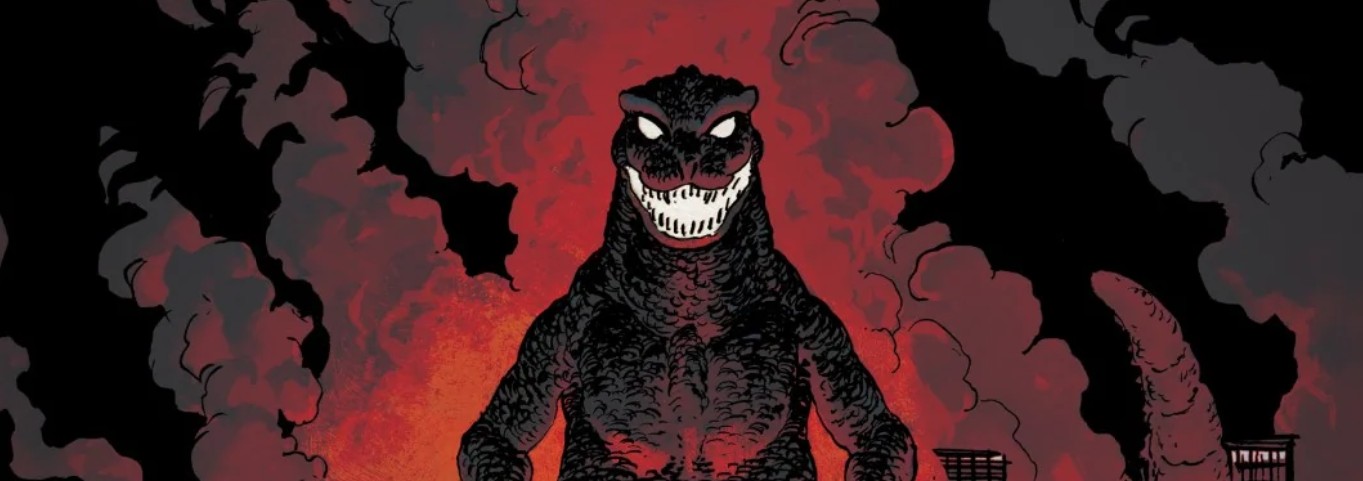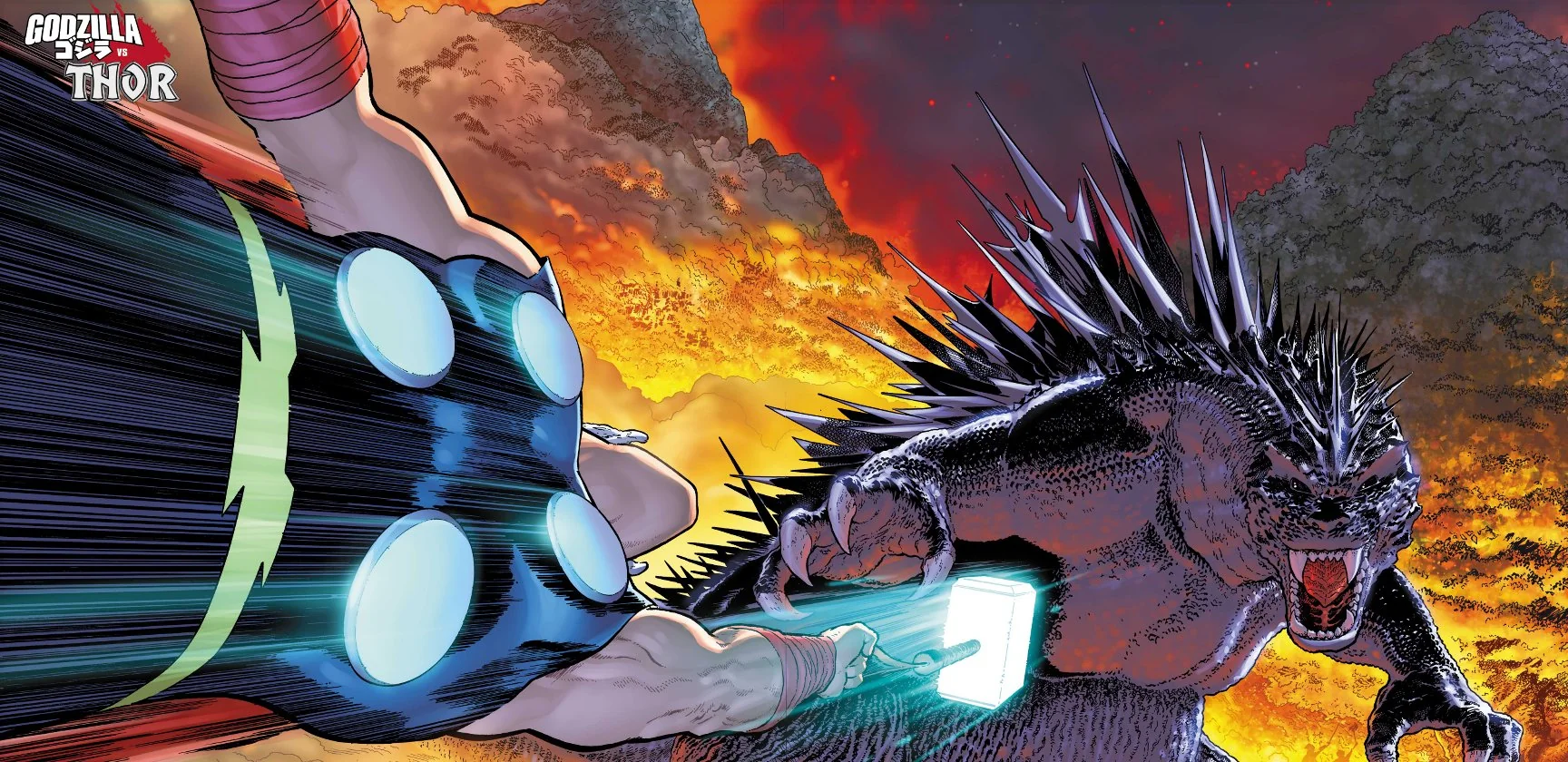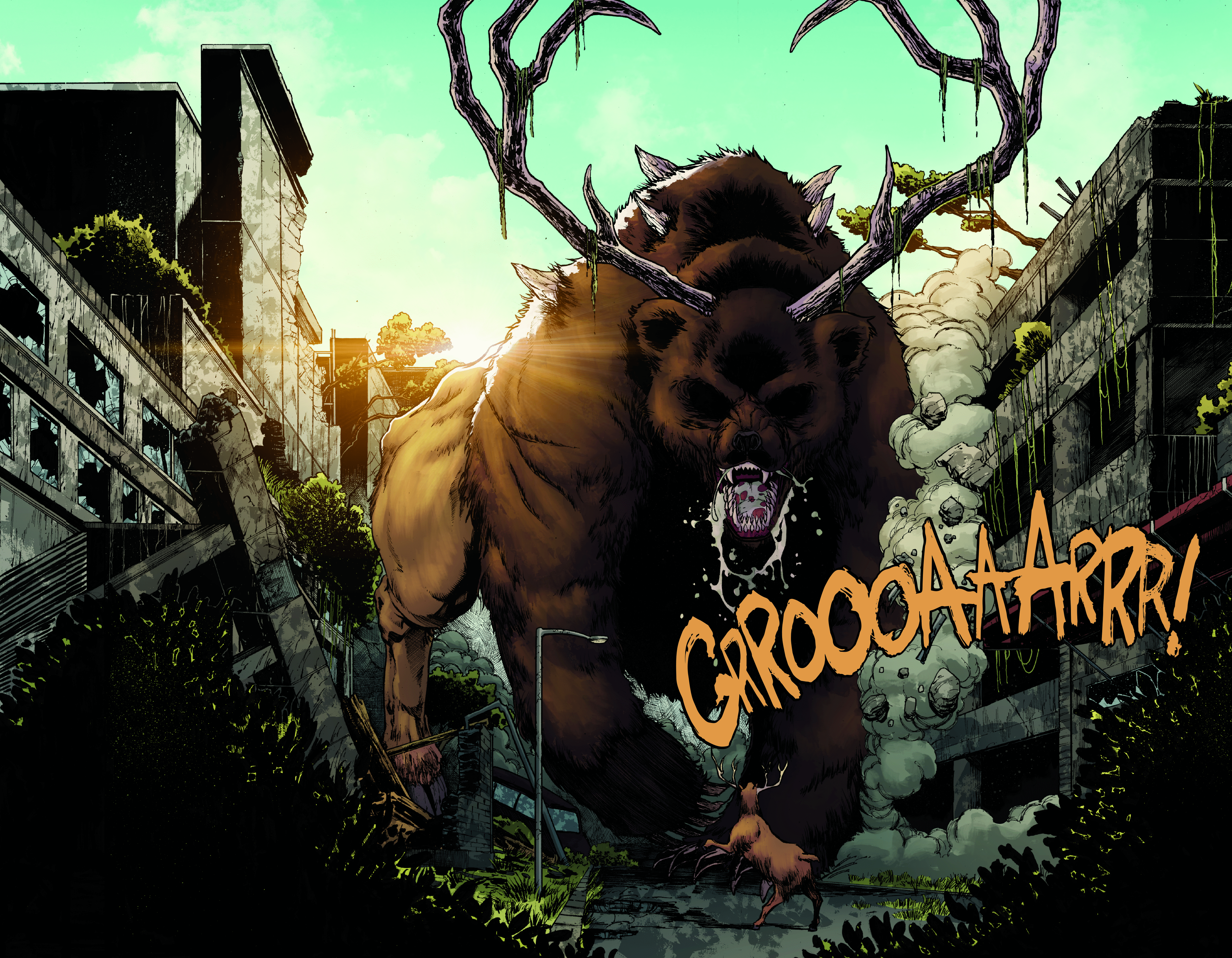I pahked the cah in Hahvahd Yahd.
There, now that we’ve got that out of the way, I can review IDW’s latest entry in their Godzilla vs. America series, Godzilla vs. Boston.
I’m from Boston, so when IDW announced the vs. America series, I thought it might be fun if they put out a Boston issue. But realistically, I figured a large chunk of Godzilla: King of the Monsters (2019) took place in that city, so the chances might be low that my favorite nuclear dinosaur would hit my neck of the woods a second time. So it was a pleasant surprise that Godzilla vs. Boston was announced as the penultimate issue. I’d felt a little lukewarm about the previous issues in this particular series, so I was definitely curious as to how one with a little more personal connection would fare. Turns out, all that was missing from those previous issues was indeed that personal connection to the cities featured. Not all the short stories featured in the issue are hits, but they’re all still extremely charming to a T, and I’d be lying if I said I didn’t have a smile on my face the whole time.

TM & ©Toho Co., Ltd.
The first short story, “The Great Gorilla Whale,” by Steve Orlando, and art by Matt Emmons, which might be the first time the Gojira naming convention has been referenced in Godzilla canon, has Godzilla coming ashore in 1888. A sailor, scarred and burned by radioactive fire, recalls his own encounter with Godzilla on the seas, the only survivor of the attack, not unlike Masaji Yamada in the original film. In the midst of his tale, Godzilla reappears in Boston Harbor, setting the city ablaze. In the process of leveling the city, a huge tank of treacle explodes, revealing Godzilla as the perpetrator of the Great Molasses Flood… About 30 years before the flood actually occurred. Engulfed by the molten syrupy substance, Godzilla is driven off. The other sailors rejoice in their defeat of the beast, but the scarred sailor disagrees with the notion, saying it was the city of Boston itself that drove it off, “…if you take a swing at her, you can be sure she’ll take a swing right back.” The story takes place over 100 years ago, but that sentiment still rings true today here.
This was probably my least favorite of the shorts, purely because… I’m just not much of a history buff. Despite living here for most of my life, I’m not very savvy in the history of the place, despite its status as one the more culturally historical cities in the country. That being said, it’s still a fun story, with some excellent artwork by Matt Emmons. The splash page showing Godzilla unleashing its atomic breath on downtown Boston might actually be the most striking piece of art in the whole book. This story will undoubtedly hit notes with other readers, but this one just wasn’t for me.
The next story, Jesse Lonergan’s “Godzilla Versus the Lobster That Attacked Boston,” is the one that made me go, “Oh, okay, I get it now.” A functionally silent story involving a blue lobster that gets mutated by strange chemicals at the Massachusetts Institute of Technology and goes on a rampage through the city, destroying almost every popular landmark in Boston (each one labelled, along with fun facts about them in the footnotes), right as the starting gun fires on the Boston Marathon! The crustacean’s rampage disturbs Godzilla, of course, and the two have it out, destroying even MORE famous landmarks, all while an unnamed runner tries his very best to actually finish the marathon (before being unintentionally beaten by Godzilla!).

TM & ©Toho Co., Ltd.
This story does a really great job in providing a tour of Boston while also razing it to the ground. Places like the New England Aquarium (where the lobster fittingly makes its first appearance), the Union Oyster House (THE oldest continuously operated restaurant in the country, one that I’ve never actually had the pleasure of dining at) and the Boston Bruins’ and Celtics’ home turf of TD Garden are among the first places struck down. It’s a blast to see the two kaiju run the gamut of destroying almost every iconic Boston installation. If anything, my one complaint about this particular story is the omission of some other landmarks, particularly the Leonard P. Zakim Bunker Hill Memorial Bridge (often shorted to just the Zakim Bridge), and perhaps even more glaring, Boston City Hall, often referred to as one of the world’s ugliest buildings, a sentiment I have always agreed with, and thus was subsequently shocked it didn’t make an appearance anywhere in this book. On the bright side, the story does take a moment to throw shade at the ever unreliable Green Line branch of the Massachusetts Bay Transportation Authority (the oldest subway line in America!). I told myself going into this book, if no one took a moment to point out an issue with the MBTA, then what was even the point? It’s not a scathing criticism, of course, just a lighthearted jab, but I expected nothing less. Ultimately, this is my favorite short out of the whole comic.
The third story, “Make Way for Mothra,” by Hanna Cha is, as the title suggests, a nice little tribute to Robert McCloskey’s Make Way for Ducklings, a childhood staple storybook for anyone who grew up in the Boston area and the official children’s book of Massachusetts, following a family of ducks as they look for a home in Boston Public Garden. Cha’s story has Godzilla filling the role of Mrs. Mallard in the storybook, bringing Mothra’s egg ashore at Deer Island, and, after she hatches, letting her explore the city, including Boston Public Garden, to see the bronze Make Way for Ducklings statue! It’s short, uber sweet, Mothra destroys one of the bridges over the infamous Storrow Drive before finally settling in at Fenway Park, home of the Boston Red Sox, to build her cocoon. It’s short and sweet, with some absolutely gorgeous painted artwork by Cha. If she were to do another storybook style short like this (or even just an actual Godzilla storybook, there have been a few of those recently!), I’d buy it without hesitation.
Finally, we have “The Green Line” by Hayden Sherman, with artwork by Patricio Delpeche, an entire story dedicated to the aforementioned subway line. It follows two MBTA workers aboard a C branch train, luring a rampaging Godzilla through Brookline towards the Coolidge Corner district. The conductor insists he saw something in that area that would’ve triggered Godzilla’s attack and they speed down the track towards the neighborhood, signal flare in hand, à la Ian Malcolm.
He talks about the various uses the Green Line has; students use it to commute to and from college campus, baseball fans take it to Kenmore to get to Fenway Park to see the Red Sox play, but the C line, he specifies, sees a lot of families riding. He lures Godzilla over to one of the most popular spots in Coolidge Corner, the Coolidge Corner Theater, an art deco movie theater that’s been around since 1933, and as a bit of personal lore, is also the place where I saw the original Japanese cut of Godzilla (1954) for the first time ever back in 2012 (and a number of other Godzilla films since)! Godzilla destroys the historic theater, revealing that the Black Hole Planet 3 aliens have kidnapped Little Godzilla and have been holding it hostage, running experiments on the little kaiju. Its child freed, we’re left with a splash page of father and son turning their rage on the aliens. Or at least Godzilla does, Little Godzilla appears to not know what’s going on in that particular panel. While the train line is presented as being way more reliable in the comic than its real life counterpart is, it’s still a fun, loving tribute to an intrinsic part of Boston culture, and the inclusion of the Coolidge Corner Theater is probably one of my favorite aspects of the book overall.
Speaking as a Bostonian myself, Godzilla vs. Boston was an utter treat of a comic book. Your mileage may vary, as mine certainly did with previous entries in the series. Without prior knowledge of the culture surrounding the area, the stories and references really just will not hit as hard (even if there are some pretty egregious missed references!). Even then, the saccharine sweetness of “Make Way for Mothra” or the grandeur of Godzilla rampaging through a late 1800s American city in “The Great Gorilla Whale” is enough to keep non-local fans plenty satisfied!





